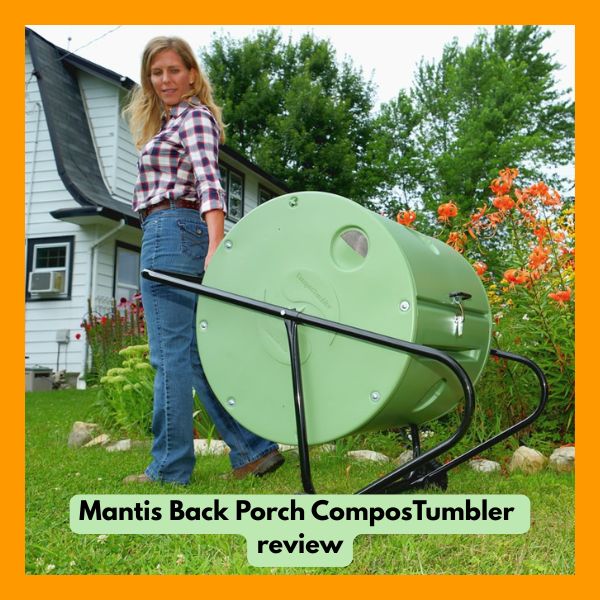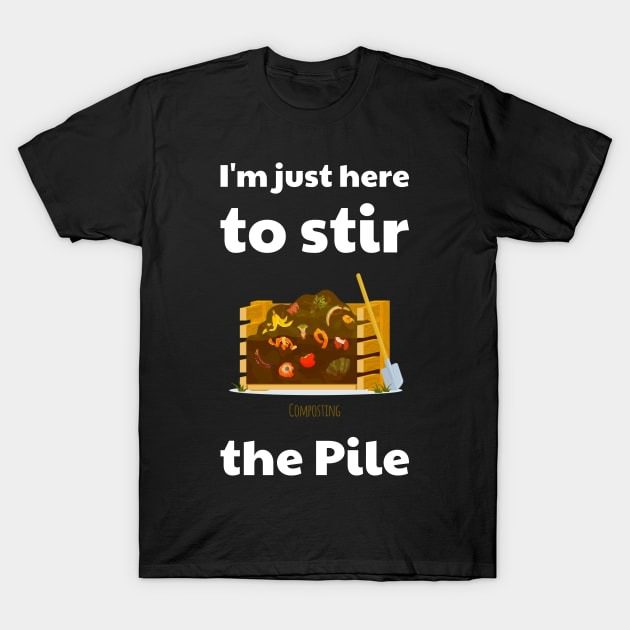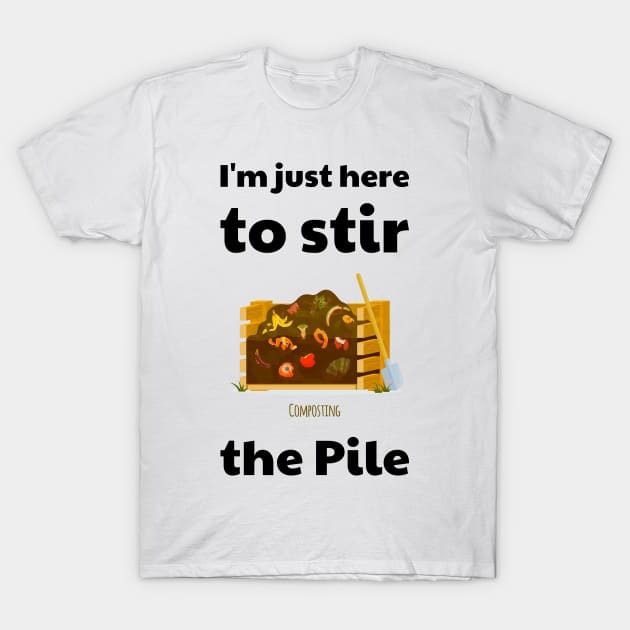The Best Spot for Healthy Composting at Home
Should compost bins be in the sun or shade? Learn how sunlight or shade affects composting speed, odors, and moisture for healthier garden soil.
If you’ve wondered should compost bins be in the sun or shade, you’re not alone. The best spot often comes down to balance.
Compost bins and compost tumblers can work well in either place, but partial shade is usually ideal to keep your compost moist and active without drying out or getting too soggy.
Friendly bacteria and worms (for vermicomposting) also thrive in a spot that’s not baking hot or completely dark.
Composting means turning kitchen scraps and garden waste into rich, crumbly compost. It matters because composting helps reduce rubbish, recycles nutrients, and supports a greener planet.
This guide will walk you through how to pick the best spot for your compost bin and explain what really works, whether you’re using a traditional pile, a compost tumbler, or a worm bin.
Here’s what you’ll learn:
- The science behind the sun or shade debate
- How sun and shade affect composting speeds and quality
- Tips for successful vermicomposting and tumbler use in your space
- How to avoid common bin mistakes and boost sustainability at home
Starting can feel tricky, but it’s easier than it looks. For simple step-by-step ideas, see the Composting Made Easy Guide.
Ready to get your compost off to the best start? Let’s find the perfect spot together!
What Is Composting—And Why Does Sun or Shade Matter?
If you’re asking, “should compost bins be in the sun or shade,” you’re on the right track. Composting is more than just a pile of scraps breaking down.
It’s a process powered by millions of tiny helpers—microbes, worms, and fungi—all working together to turn leftovers into rich, dark compost.
Where you put your bin is a big deal: too much sun or not enough can change the speed, moisture, and even the smell of your compost.
Let’s look at why the right balance of sun and shade matters for a healthy, happy compost pile.
The Science of Compost: Heat, Moisture, and Decomposition

Photo by Alfo Medeiros
Compost bins are a bit like Goldilocks: they like things just right—not too hot, not too cold, not too dry, and not too wet.
Where you place your compost can speed up or slow down how your scraps decompose.
- Sun: Direct sun warms up your compost, helping microbes break down materials faster—especially in spring and autumn. Heat is a compost booster, but too much can dry things out, making you need to water the pile more often.
- Shade: Shade helps your pile hold onto moisture, which is critical for worms and bacteria to thrive. Decomposition slows a bit, but your pile won’t dry out or lose important bugs to the heat.
- Temperature Control: While heat from the sun is useful, it’s the internal temperature that matters most. A well-managed compost bin heats up no matter its location. Sun simply gets things started.
- Microbial Activity: Microbes and worms (heroes of composting) love warm, damp conditions. Extreme sun can sometimes dry out or overheat your pile, slowing their work. Shade can keep things steady and moist, especially in hot climates.
For more details on how sunlight impacts microbial life, check out How does sun affect compost? Is heat really the only thing?.
Key Takeaways:
- Sun speeds up decomposition but can dry the pile.
- Shade keeps compost moist and steady, even in hot summers.
- The best spot balances some sun for warmth with enough shade for moisture.
How Compost Bin Location Affects Different Methods
Not all compost methods are created equal—some like it hot, and some (like worm bins) hate to bake.
Traditional Compost Bins:
- Sun: Good for speed, bad for dryness. Bins in direct sun often need additional watering, but they heat up quickly.
- Shade: Slower, but steadier. The pile stays moist with less effort, great for folks who want less maintenance or live in hot areas.
Vermicomposting (Worm Bins):
- Sun: Worms are not sunbathers. Direct sunshine can overheat the bin and harm your worms. They prefer cooler, shady spots—think under a tree or along a north-facing wall.
- Shade: Keeps worms comfortable, moist, and safe. A shady, sheltered place protects from rapid temperature swings.
Compost Tumblers:
- Sun: Tumblers like warmth to keep things moving, but direct sun in summer can make the insides too hot, killing helpful microbes or drying out the batch. Sun also makes the tumbler easier to turn in cooler months.
- Shade: Tumblers in the shade stay moist but may break down compost a bit more slowly, especially in cooler weather.
Here’s a quick list of pros and cons for each setup:
- Traditional Bin in Sun
- Pros: Faster breakdown, heats up early in spring.
- Cons: Dries out quickly, needs watering.
- Traditional Bin in Shade
- Pros: Maintains moisture, less babysitting.
- Cons: Slower results.
- Worm Bin in Sun
- Pros: Very few—avoid this if possible.
- Cons: Overheating harms worms, dries bedding.
- Worm Bin in Shade
- Pros: Happy worms, consistent compost, minimal worry.
- Cons: Needs shelter from heavy rain.
- Compost Tumbler in Sun
- Pros: Warms up fast, easy turning in cooler months.
- Cons: Risk of overheating in high summer.
- Compost Tumbler in Shade
- Pros: Moisture stays in, steady breakdown through summer.
- Cons: Slower action in cold weather.
For practical tips on siting your compost bin, see Best Compost Locations and the Compost Charm guide on 6 effective composting methods for even more ideas.
If you want easy seasonal tips for managing sun and moisture, visit the Composting Calendar Tips.
Quick Tips:
- In hot, dry climates, shade keeps compost healthy and less thirsty.
- In cool climates, a bit of sun helps bins stay active.
- Move bins if needed, or create shade with a plant, fence, or cover.
Choosing a location isn’t just about sun or shade—it’s about balancing both for your composting style, space, and the time you want to spend caring for your bin.
Practical Tips for Placing Your Compost Bin at Home
Finding the perfect spot for your compost bin can feel like finding the sunniest window for your favorite houseplant.
There’s no single “right” answer to the question, should compost bins be in the sun or shade. Like many things in gardening, the answer depends on your unique space and goals. The good news?
You have options, and even a little trial and error won’t spell disaster for your composting efforts.
Here’s how to decide—and what to do if things go sideways.
Sun, Shade, or a Bit of Both? Real-World Placement Examples

Photo by Greta Hoffman
Some days it might feel like your compost bin should come equipped with its own sunhat and parasol.
When choosing placement, channel your inner weather reporter and think about where the heat and shade land in your garden throughout the year.
Here are common, real-life options for placing your compost bin:
- Partially Shaded Corner: Most home composters find a spot that gets morning sun and afternoon shade works best. This helps warm the pile but keeps moisture from evaporating too fast.
- Along a Sunny Wall: In cooler climates, setting your compost bin against a brick or stone wall with good sun exposure gives microbes a jump start in spring and autumn. Just add a watering can nearby for those hot days.
- Under a Tree or Shrub: If you’re doing vermicomposting or live where summers sizzle, a shady, sheltered spot keeps your worms cool and happy. Think of it as their own compost cabana.
- Compartments or Tumbler on Wheels: If you’ve chosen a compost tumbler, you can move it seasonally. Let it soak up sun in the spring, then roll it into shade for summer to avoid overheating.
Seasonal tricks:
Just like you change your wardrobe for summer and winter, you can adjust your compost’s location or add protection as needed.
- Spring: Move the bin to a sunny spot or peel back any covers if you want faster composting.
- Summer: Shade helps retain moisture. If your pile looks parched, provide some afternoon cover or water it now and then.
- Autumn/Winter: Let more sun reach the bin to keep things active, even as the air cools.
For an easy breakdown of seasonal composting steps, check out the Composting Calendar Tips.
Key analogy: Your compost is like a bread dough rising—give it warmth for activity, but not so much heat that it dries out and stalls.
Get this great Design on a whole host of merch!
Troubleshooting Common Compost Location Problems
Sometimes compost bins run into trouble, no matter how carefully you pick the spot. Does your bin dry out after a heatwave? Is it a magnet for bugs?
Or maybe your kitchen scraps just…sit there?
Most issues can be solved with a few simple tweaks.
Here’s a quick guide to the most frequent issues and fixes:
- Bin Dries Out Too Fast:
- Problem: Your compost turns crispy and doesn’t break down well.
- Quick Fixes:
- Move the bin to a shadier spot (even part of the day helps).
- Cover the pile with cardboard, wood chips or an old piece of carpet.
- Water occasionally—aim for the dampness of a wrung-out sponge.
- Pile Stays Too Wet or Soggy:
- Problem: The compost smells bad and looks sludgy.
- Quick Fixes:
- Give it more sun (trim nearby bushes or move it for part of the day).
- Mix in dry “browns” like shredded cardboard, autumn leaves, or straw.
- Prop up the bin for more drainage.
- Attracing Pests (like rats or flies):
- Problem: Visitors you never invited.
- Quick Fixes:
- Never add cooked food, meat, or dairy.
- Keep a layer of dry leaves or soil on top after each food scrap addition.
- For stubborn pests, consider a sealed compost tumbler or a special bin cover.
- For more advice, see Compost Troubleshooting Tips.
- Compost Isn’t Breaking Down:
- Problem: Material just sits without changing.
- Quick Fixes:
- Make sure you’re not in deep shade in a cool area—move to a sunnier spot if possible.
- Turn or mix the pile once a week for air.
- Chop up food scraps and garden waste smaller.
- Balance your “greens” (fresh, moist) and “browns” (dry, carbon-rich).
If you’re new and want detailed steps on starting fresh, visit the starting composting at home guide for more.
Quick Takeaways
- Should compost bins be in the sun or shade? Both can work. Part sun, part shade is best for steady, healthy compost. Adjust seasonally if you can.
- If your bin keeps drying out, add shade or moisture. If it’s soggy, let in more sun and dry browns.
- Moveable bins or tumblers give you flexibility. Shady spots are safest for vermicomposting.
- Regular checks, a little water, and good airflow solve most problems. Composting is flexible—no one spot or method fits every garden.
For real-life tips from other gardeners about the best bin spots, check out Where to Put a Compost Bin and the community’s thoughts on placing bins in sun or shade at this Reddit discussion.
If you get stumped, the Compost Charm FAQ bot is a great place to ask unusual location questions.
Making compost at home should fit your lifestyle—not the other way around.
Try, tweak, and remember: even “mistakes” turn into fertile learning for your next round of composting.
Key Takeaways: Sun vs Shade for Compost Bins
Trying to decide where to put your compost bin? You’re not alone.
The question, should compost bins be in the sun or shade, pops up for almost every new (and even experienced) composter.
Placement affects everything from how fast your scraps turn into rich compost to how much maintenance your pile needs.
While both sun and shade have their perks, a balanced approach keeps your composting on track in most climates.
Here’s a clear breakdown to help you remember what matters—whether you’re dealing with kitchen leftovers, garden clippings, or trying vermicomposting or a compost tumbler for the first time.
Quick Answers for Sun vs Shade
- Both Sun and Shade Work: Compost bins will break down scraps in the sun or shade. However, each setting offers unique benefits and drawbacks.
- Partial Shade is Usually Best: Most home composters see the best results in a spot that gets sun in the morning and shade in the afternoon. Think of it as giving your compost a gentle alarm clock followed by a cool break from the midday heat.
- Sun Speeds Up Composting: Direct sun warms up the bin, making your pile heat up and decay faster. This is great in cool weather but can dry your pile in hot spells.
- Shade Maintains Moisture: Bins in the shade don’t dry out as fast. Microbes and worms (especially if you’re into vermicomposting) love the cooler temps and steady moisture shade offers.
- Too Much Sun Has Risks: In hot summers, bins in full sun can overheat, killing helpful microbes and worms or making the pile bone dry.
- Too Much Shade Slows Things Down: A bin left in deep shade will break down more slowly, especially during colder months.
Practical Takeaways for Every Composter
Where you place your compost bin shapes your whole composting experience.
Here are the must-know tips for each type of setup:
- Compost Bin or Heap
- Put it where you’ll use it most. If you walk by daily, you’re more likely to check moisture and mix the pile.
- If your area is hot and dry, favor more shade. Expect to water your pile in sunnier spots.
- In cooler, wetter climates, choose a spot that gets some sun for warmth but drains well.
- Compost Tumbler
- Tumblers in sun heat up quicker, which helps start the composting process.
- If the tumbler feels hot to touch on summer days, shift it to a shaded area. Too much sun can warp plastic and hurt beneficial bacteria.
- Vermicomposting (Worm Bins)
- Always pick a shady location. Worms like it cool, damp, and never scorching.
- Stay away from direct sunlight to prevent overheating and stress.
Want extra help with tricky placements or a smaller space? The guide on composting in a small backyard offers practical advice for different garden setups and challenges.
Key Points at a Glance
If your neighbor asks, “should compost bins be in the sun or shade?”, you can give these friendly pointers:
- Either location can work—balance is key.
- Sun speeds things up but dries out compost. Shade keeps things damp but slows the process.
- A mix of both (like morning sun and afternoon shade) is ideal for most climates.
- For worm bins, always choose full shade.
- Be ready to move bins or protect them as the seasons change.
For more real-world feedback on what works best, check out this Reddit discussion about compost bin placement. You might find a tip or two that fits your unique backyard setup.
Setting Yourself Up for Success
The best composting spot is one that fits your lifestyle and garden.
If you’re excited to get composting but feeling uncertain, the Composting Calendar Tips offer practical guidance tailored to the time of year.
Composting is as much about experimentation as it is about science.
Sun or shade, kitchen scraps or yard clippings, the key is to start and keep learning as you go. When in doubt, a happy, thriving compost pile will always give you hints about what it needs next.
Frequently Asked Questions: Sun, Shade, and Composting Success
Choosing the perfect spot for your compost bin sparks a lot of curiosity.
Gardeners often ask about sunlight, shade, and the effect on compost, especially if they’re keen on vermicomposting or considering a compost tumbler for their home.
If you’ve wondered, should compost bins be in the sun or shade, you’re not alone—there’s no one-size-fits-all answer, but there are some clear guidelines and clever tricks to make composting work whatever your garden throws at you.
Let’s clear up common questions, so your compost thrives from season to season.
Does Compost Break Down Faster in Sun or Shade?
Compost bins in direct sun heat up fast, which can speed up the composting process.
Microbes and bacteria work quicker when warm, so sunny spots often lead to faster results, especially in cool climates.
But sun isn’t always better—too much heat can dry out your pile and slow things down unless you add water frequently.
Shade keeps compost moist and helps beneficial creatures like worms feel right at home.
Shaded bins may take a bit longer to break down material, but there’s less risk of overheating and drying out. For most gardens, partial shade offers the best balance.
If you want a speedy breakdown without the hassle of daily watering, a spot with morning sun and afternoon shade is usually the sweet spot.
This idea works for both traditional bins and tumblers.
Will My Compost Smell if Kept in the Sun?
A compost pile in the sun might get a little whiffy if it dries out or you add too many wet kitchen scraps without balancing them with dry “browns” like leaves or cardboard.
Keeping the pile moist (but not soggy) and aerated stops any rotten egg smells in their tracks.
Adding compost-friendly insects and keeping pests out also helps manage odors. For practical tips, check out this guide on how to attract compost friendly insects.
What About Worm Composting (Vermicomposting)—Do Worms Need Shade?
Worms love cool, dark, and moist places. Vermicomposting bins should always stay out of direct sunlight.
Heat and dryness stress worms, sending them burrowing deep—or worse, trying to escape.
For the healthiest worm bin, pick a shady, protected area such as under a bench, against a north-facing wall, or even indoors.
If you’re new to worm composting, see our guide on better composting and vermicomposting techniques to keep your worm colony happy.
Can I Move My Compost Bin as the Seasons Change?
Absolutely! Compost bins and tumblers aren’t set in stone. Lots of gardeners give their bins a bit of sun when it’s cool, then shift them into more shade for the hottest months.
Moving bins just a few feet can make a big difference in temperature and moisture.
Worried about disturbing your pile? Compost is forgiving. Just lift the pile (or roll your tumbler) gently; the microbes will get right back to work.
Seasonal tweaks help maintain a healthy balance—think of it as rotating your wardrobe for the weather.
Is a Compost Tumbler Better in Sun or Shade?
A compost tumbler benefits from the sun, especially early in the season. Sunlight helps raise the temperature so that microbes can break down scraps faster.
But, on scorching days, the inside can get very hot. If your tumbler feels warm or the compost gets dry, move it to a shadier spot or throw on a light cover.
For in-depth tips on using tumblers in different spots, skim our Compost Tumbler guide.
Is There a “Perfect” Spot for a Compost Bin?
While there is no magical location for everyone, aim for:
- Morning sun, afternoon shade, or dappled sunlight
- Flat ground for drainage
- Easy access for adding scraps and turning the pile
- Away from direct kitchen windows if you’re worried about smells or pests
If you’re building your own system, see these tips on crafting the perfect compost bin for advice on site selection.
What Are the Main Takeaways for Compost Bin Placement?
Here’s a quick-hit summary you can use anytime you think, “should compost bins be in the sun or shade?”:
- Both sun and shade work—balance is key for home composting.
- Sun speeds up composting but dries material faster.
- Shade preserves moisture and keeps worms happy, but decomposes slower.
- Partial shade wins for most UK gardens (and beyond).
- Vermicomposting bins must stay out of direct sun.
- Move bins seasonally for best results, especially compost tumblers.
- Easy access and airflow matter—no matter the sunlight.
If you want creative placement ideas or troubleshooting help, visit our Compost Tumbler benefits or browse a full range of DIY composter solutions.
By learning how sun and shade affect compost, you’ll turn food and garden waste into black gold all year round.
Composting fits any home or garden; a few smart choices about your bin’s home will make it easier, cleaner, and even a little more fun.
Get this great design on a whole raft of merch!
Conclusion
Compost bins can thrive in both sun and shade, but the sweet spot for most home gardens is partial shade.
This balance keeps compost moist enough for microbes and worms to flourish, but warm enough for scraps to break down at a steady pace. If you’re starting out or trying vermicomposting or a compost tumbler, go easy on yourself.
Composting is flexible—tweak your setup and see what works in your garden.
Here are the key points to remember:
- Partial shade is usually the best answer to “should compost bins be in the sun or shade?”
- Sun speeds things up, but can dry compost out quickly.
- Shade keeps things cool and damp but may need more patience.
- Worm bins need shade, and tumblers like a mix of both sun and shelter.
- The best spot is one you can check and adjust as needed.
Composting at home is for everyone.
If you’re curious about getting started, want inspiration for small spaces, or need help with compost ingredients, check out these small garden composting tips and advice on how to balance nitrogen and carbon in compost.
Every effort to recycle food waste makes a difference—and your compost will soon show it.
Thank you for growing along with us! Have a question about composting or need help with a tricky bin?
Send your question to the Compost Charm team or visit the FAQ bot.
Your garden, and the planet, will thank you.











